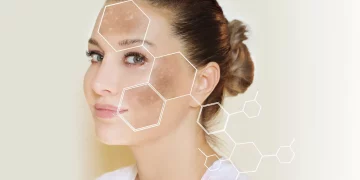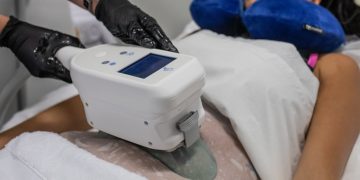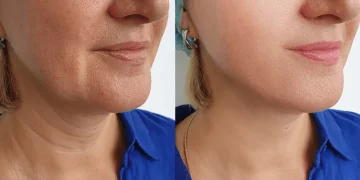Facelifts have long been regarded as the go-to procedure for individuals seeking to turn back the clock on aging. However, in recent years, the cosmetic industry has introduced non-surgical alternatives that promise to lift, tighten, and rejuvenate the face without the need for invasive surgery. These non-surgical facelifts have become an attractive option for many, offering a less invasive, quicker solution to facial aging. But the real question remains: Are non-surgical facelifts as effective as their traditional counterparts?
In this article, we will explore the various non-invasive facelift options available today, compare them to traditional surgical facelifts, and assess the pros and cons of each procedure. By the end, you’ll have a clearer understanding of whether non-surgical facelifts can offer the same results as the real deal, and whether they might be right for you.
What is a Non-Surgical Facelift?
A non-surgical facelift refers to a variety of non-invasive procedures designed to improve the appearance of sagging skin, wrinkles, and volume loss without the need for traditional surgery. These procedures utilize innovative techniques such as injectables, energy-based technologies, and skin-tightening devices to lift, smooth, and rejuvenate the face. The most common non-surgical facelift options include Botox and dermal fillers, thread lifts, laser treatments, and ultrasound technologies.
Unlike traditional facelifts, which involve making incisions, tightening muscles and tissues, and removing excess skin, non-surgical facelifts aim to rejuvenate the skin through less invasive methods. These treatments are generally quicker, require little to no downtime, and can be performed in an outpatient setting, making them an appealing option for those seeking facial rejuvenation without the risks and recovery time associated with surgery.
The Different Types of Non-Surgical Facelifts
Several non-surgical treatments are commonly used to achieve a facelift-like result. Each option has its own benefits and limitations. Below are some of the most popular non-surgical facelift procedures:
Botox and Dermal Fillers
Botox and dermal fillers are two of the most widely known and used treatments for non-surgical facelifts. Botox is primarily used to relax the muscles that cause wrinkles, particularly around the forehead and eyes. By temporarily paralyzing these muscles, Botox softens fine lines and prevents the formation of deeper wrinkles. Dermal fillers, on the other hand, are injectable gels used to restore lost volume, smooth out deep lines, and lift sagging areas, such as the cheeks and jawline. Fillers can also be used to enhance facial features, such as plumping the lips or lifting the eyebrows.
Botox and dermal fillers are effective for individuals with early to moderate signs of aging. While they do not provide the same dramatic results as a traditional facelift, they can significantly improve the overall appearance of the face, restoring youthful contours and reducing the visible effects of aging.
Thread Lifting
Thread lifting is another non-surgical option that involves inserting dissolvable threads into the skin to lift and tighten sagging areas of the face. The threads are inserted under the skin using a thin needle, and once in place, they are pulled tight to create an instant lifting effect. Over time, the threads stimulate collagen production, leading to longer-lasting skin tightening. The procedure typically takes about 30 minutes to an hour and requires minimal downtime. Results can last anywhere from one to three years, depending on the individual and the type of threads used.
Thread lifting can be particularly effective for people who are experiencing mild to moderate skin laxity and wish to avoid the invasiveness of traditional surgery. However, it is important to note that thread lifts do not have the same long-term, dramatic results as surgical facelifts, and results may vary from person to person.

Laser Treatments
Laser skin resurfacing and fractional laser treatments are popular methods for rejuvenating the skin without surgery. These treatments use concentrated light energy to target the skin’s surface and stimulate the production of collagen and elastin. Fractional lasers, such as Fraxel, treat only a fraction of the skin at a time, promoting quicker healing and minimal downtime. This process helps reduce wrinkles, fine lines, and pigmentation while improving the overall texture of the skin.
Laser treatments can be effective for individuals with mild to moderate skin aging concerns, including fine lines, sun damage, and uneven skin tone. However, they are not as effective for lifting sagging skin, which is a primary concern for many people considering a facelift.
Ultherapy and Radiofrequency Treatments
Ultherapy is an FDA-approved non-surgical treatment that uses ultrasound energy to stimulate collagen production deep within the skin. By targeting the underlying layers of tissue, Ultherapy tightens and lifts sagging skin, particularly around the jawline, chin, and neck. The treatment is non-invasive and does not require incisions or downtime. Ultherapy can provide significant lifting and tightening results over the course of several months, as collagen gradually builds and tightens the skin.
Radiofrequency treatments, such as Thermage, use radiofrequency energy to heat the skin’s deep layers, encouraging collagen production and skin tightening. These treatments are effective for individuals with mild to moderate sagging and can help improve skin tone and texture. While both Ultherapy and radiofrequency treatments are effective for lifting and tightening the skin, the results tend to be more subtle compared to traditional facelifts, and multiple sessions may be required for optimal results.
Comparing Non-Surgical Facelifts to Traditional Facelifts
Traditional facelifts are invasive procedures that involve making incisions around the hairline, ears, or chin to lift and tighten the skin. The surgeon removes excess skin, tightens underlying tissues, and repositions muscles to create a more youthful, rejuvenated appearance. While traditional facelifts deliver dramatic and long-lasting results, they also come with significant risks, a lengthy recovery time, and the need for anesthesia.
In contrast, non-surgical facelifts are generally less invasive and offer quicker results with less downtime. However, they are not a one-size-fits-all solution, and the results tend to be more subtle and temporary compared to a full facelift. Let’s compare both options based on several factors:
- Procedure Complexity: Traditional facelifts are complex surgeries that require skilled surgeons to perform. Non-surgical facelifts, on the other hand, can be completed by trained dermatologists, aestheticians, or other licensed practitioners with minimal disruption.
- Recovery Time: Traditional facelifts typically require several weeks of recovery, during which patients may experience bruising, swelling, and discomfort. Non-surgical facelifts usually require minimal recovery time, and many patients can return to their normal activities immediately after the procedure.
- Results: A traditional facelift can provide dramatic, long-lasting results that last for many years. Non-surgical facelifts, however, offer more subtle improvements that typically last from a few months to a year.
- Cost: Traditional facelifts are much more expensive than non-surgical alternatives due to the complexity of the procedure and the need for anesthesia and a surgical facility. Non-surgical facelifts tend to be more affordable, but multiple treatments may be required to maintain the results.
- Risks and Side Effects: Surgical facelifts come with the risks of infection, scarring, and anesthesia complications. Non-surgical facelifts have fewer risks, but side effects such as bruising, swelling, or allergic reactions to injectables can still occur.
Ideal Candidates for Non-Surgical Facelifts
Non-surgical facelifts are ideal for individuals who have mild to moderate signs of aging and want to avoid the downtime and risks associated with traditional surgery. The best candidates are typically in their 30s to 50s and are seeking subtle rejuvenation rather than a dramatic change in their appearance. Those who are not yet experiencing severe skin laxity and want to address early signs of aging may find non-surgical facelifts to be an excellent solution.
Individuals with more advanced signs of aging or significant skin sagging may still benefit from non-surgical facelifts, but they should have realistic expectations about the results. For those who require more dramatic results, a traditional facelift may be the best option.
Conclusion: Are Non-Surgical Facelifts as Effective as the Real Deal?
Non-surgical facelifts are an excellent option for individuals who are not yet ready for surgery but still want to address signs of aging. While they may not provide the same dramatic, long-lasting results as a traditional facelift, non-surgical procedures can offer noticeable improvements with minimal downtime and fewer risks. Whether non-surgical facelifts are right for you depends on your individual goals, the extent of your aging concerns, and your desire for a subtle or dramatic transformation.
If you’re looking for a non-invasive solution to refresh your appearance and restore youthful contours, non-surgical facelifts may be the perfect choice. However, if you’re looking for more dramatic, permanent results, a traditional facelift may still be the best option. Consulting with a qualified cosmetic professional will help you determine the best course of action based on your needs and expectations.












































